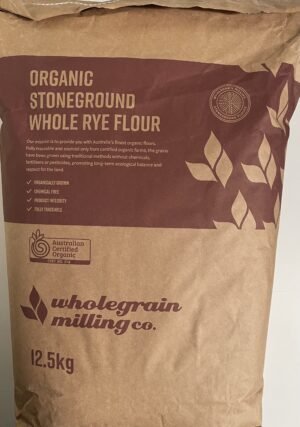Sourdough troubleshooting is an essential skill for any aspiring baker. Perfecting sourdough bread is as much about understanding what can go wrong as it is about following a recipe.
Whether you’re a beginner or have been baking for a while, encountering issues is a normal part of the learning process. In this guide, we’ll focus on sourdough troubleshooting by identifying common mistakes and providing practical solutions to help you achieve that perfect loaf.
Gluten-free bread making flour: Buying and Usage Guide.
Table of Content
Starter Isn’t Rising
A common issue in sourdough troubleshooting is a starter that won’t rise. This problem is usually due to insufficient fermentation time or an inhospitable environment for the yeast and bacteria.
To fix this, ensure your starter is kept in a warm place (ideally around 70-75°F) and fed regularly. If you’re feeding it daily, try using a ratio of 1:1:1 (starter:water:flour) to maintain balance and vitality. Remember, a healthy starter is crucial for successful sourdough baking, so give it the attention it deserves.
Dense or Heavy Bread
Another frequent challenge in sourdough troubleshooting is ending up with dense or heavy bread.
This issue often stems from underproofing, meaning the dough hasn’t fermented long enough. To address this, allow your dough to proof for a longer period, especially if baking in a cooler environment.
Proofing times can vary significantly depending on the temperature, so it’s more about observing the dough’s size and texture rather than watching the clock. The dough should be almost double in size and feel light and puffy before baking.
Bread Not Rising in the Oven
A common disappointment in sourdough troubleshooting is bread that doesn’t rise in the oven, known as lacking oven spring.
This issue is often related to overproofing. Overproofed dough exhausts the yeast, leaving little power for the bread to rise in the oven. To fix this, shorten the final proofing time.
Also, ensure you’re baking in a properly preheated oven and consider using a baking stone or Dutch oven to provide consistent heat. Scoring the dough right before baking can also help it expand properly.
Mastering sourdough troubleshooting is a journey of patience and persistence. Understanding these common mistakes and knowing how to fix them can significantly improve your sourdough baking.
Remember, each mistake is a learning opportunity, bringing you one step closer to baking the perfect sourdough bread. Keep practicing, and don’t get discouraged – sourdough perfection is within your reach!






